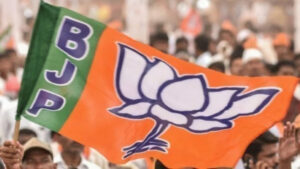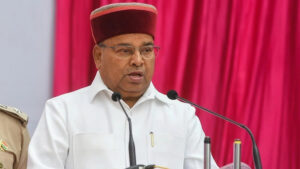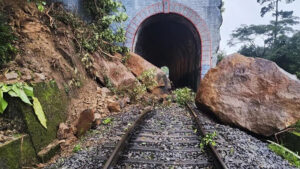A high-level visit took an unexpected turn when Union Minister Piyush Goyal was compelled to cancel a scheduled aerial survey in Andhra Pradesh due to a sudden technical snag in the helicopter designated for the journey. The incident has drawn attention to the importance of aviation safety, particularly when it involves ministers on critical field missions.
The survey, intended to assess development works and review infrastructure in key areas of the state, was part of a broader initiative to strengthen central-state collaboration. However, the abrupt cancellation caused delays in the itinerary and sparked a new conversation about aircraft reliability, protocol management, and emergency preparedness during ministerial visits.
What Happened: Timeline of Events
The Union Minister had arrived in Andhra Pradesh with a packed schedule that included meetings with local officials, inspection of central government projects, and most notably, an aerial survey of multiple rural and semi-urban districts. The aim was to get a bird’s-eye view of ongoing developmental efforts, including infrastructure upgrades, energy distribution systems, and transportation corridors.
Just minutes before take-off, technical issues were identified in the helicopter, reportedly involving rotor function and communication systems. Aviation engineers were called in to assess the situation, and after a swift safety review, it was determined that the aircraft could not safely proceed with the mission.
As a result, the aerial survey was cancelled on the spot, and the Minister shifted to an alternate ground-based itinerary to continue the rest of the day’s engagements.
Safety First: Aviation Protocol Takes Precedence
The incident underscores the strict aviation safety protocols enforced when it comes to transporting government dignitaries. Whether it’s mechanical issues or weather anomalies, safety takes precedence over schedule. Aviation experts say that while helicopters offer unparalleled flexibility for remote inspections, they also demand rigorous maintenance and pre-flight checks.
The prompt decision to ground the helicopter avoided a potentially hazardous situation. It reflects well on the alertness of the flight crew and maintenance staff, who prioritized ministerial safety over time-bound programs.
It also reopens discussions around the aging fleet of public helicopters, especially those used for political and official travel across remote and often geographically challenging areas of India.
Impact on Scheduled Programs and Local Administration
Though the aerial survey was shelved, Piyush Goyal’s visit still continued, albeit in a revised form. Instead of a bird’s-eye overview, he opted for a road-based review of key development sites and took part in interactive sessions with local administrative officials and stakeholders.
While ground inspections lack the coverage speed of aerial surveys, they allowed the Minister to engage more closely with communities, particularly in areas focused on rural electrification, railway expansion, and logistics infrastructure.
Local authorities, who had spent days preparing for the visit, were quick to adapt. Coordination between district officials, law enforcement, and the central entourage was lauded as swift and efficient, allowing for a smooth transition from air to land.
Political Reactions and Public Perception
The incident triggered varied reactions in political and public circles. Opposition voices questioned the readiness and maintenance of aircraft assigned for central leaders, suggesting a need for a comprehensive review of aviation logistics used for official tours.
On the other hand, the ruling leadership emphasized the Minister’s commitment to fulfilling the agenda despite logistical setbacks, showcasing his adaptability and sense of responsibility. Supporters noted that the Minister’s continued engagement with officials and the public demonstrated an unwavering focus on governance over convenience.
Public reactions were largely sympathetic, with many appreciating that safety was prioritized and the tour continued regardless of obstacles. The broader consensus was one of respect for precaution over hurried risk.
Wider Implications: Infrastructure Oversight and Safety Norms
While the immediate disruption was contained, this incident has sparked a wider debate on the state of aerial transportation infrastructure for government missions. Questions are being raised:
-
Are all helicopters and aircraft assigned to ministers maintained at top levels of readiness?
-
Should there be redundancy systems or backup options available for emergency rerouting?
-
Are field trips involving aerial surveys planned with adequate contingencies?
Policy analysts argue that as ministers increasingly travel to monitor ground realities, especially in tier-2 and tier-3 regions, there needs to be a dedicated aviation protocol aligned with both efficiency and modern safety standards.
There is also talk of investing in advanced drones and satellite-assisted surveys, which can supplement manned aerial missions and reduce risks altogether.
Conclusion: A Day of Disruption, But Not Defeat
The technical failure of a helicopter carrying a senior Union Minister could have caused panic or logistical chaos. Instead, it turned into a case study in responsive crisis management. Minister Piyush Goyal’s decision to pivot to ground inspections ensured that the broader purpose of the visit—to review, engage, and assess—remained intact.
It also served as a reminder that technology, while enabling, is not infallible, and that human judgment remains crucial in high-stakes situations. The real achievement of the day lay not in the aerial survey that didn’t happen, but in the resilience shown by a public official and his team in the face of unexpected disruption.
Ultimately, this episode may catalyze changes in how such high-level tours are planned and executed in the future—with more foresight, stronger backup strategies, and better safety governance.
Sponsored
FACTS Transcripts
Apply for a University document anywhere
https://www.factstranscript.com
Quick Transcripts for popular Universities, check your University name now and get started. We help you to get your transcript application online which is accepted for use of IRCC.
No DD, NO Paperwork. 100% Authentic, Reliable.
FACTS Transcripts Charges · Reviews · Assam Universities · Home · Know your University











